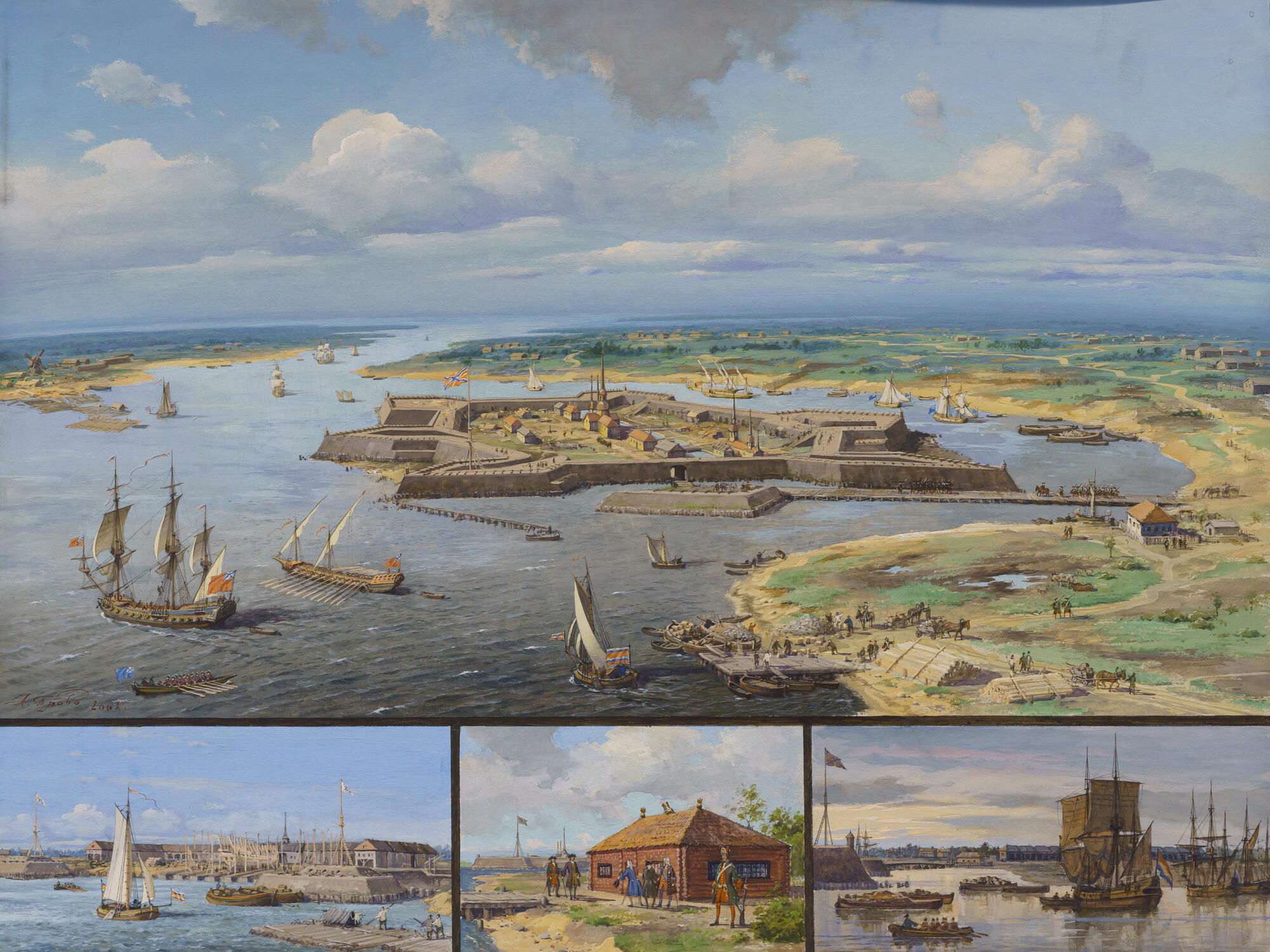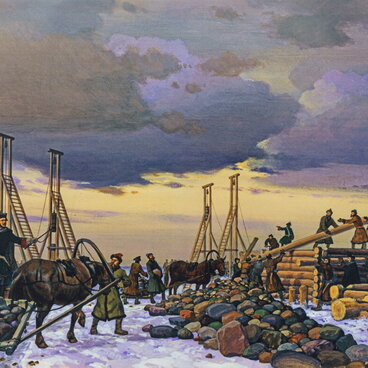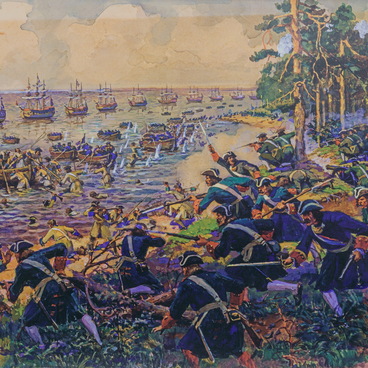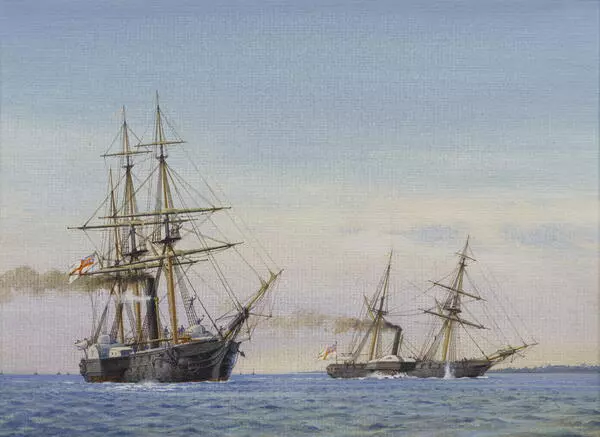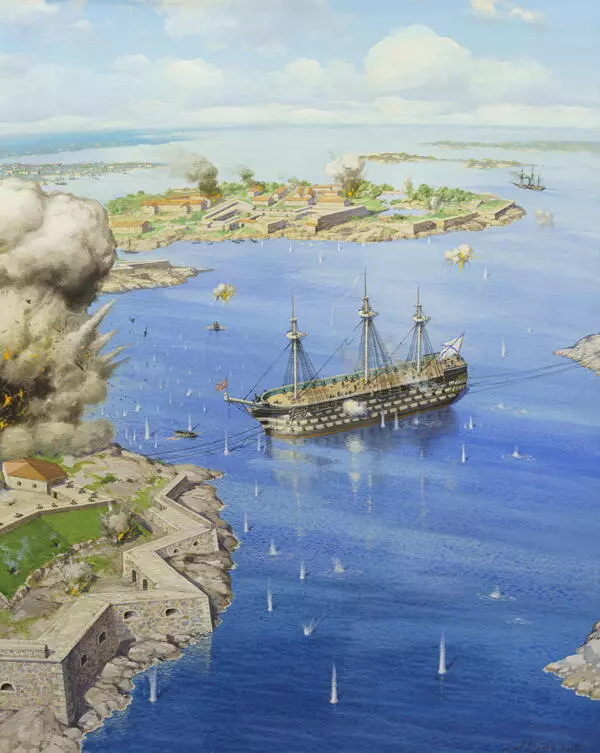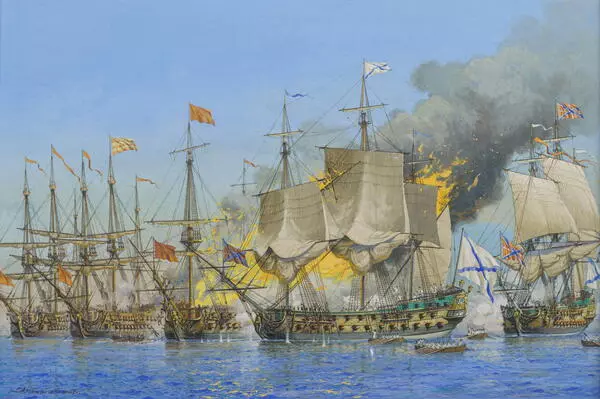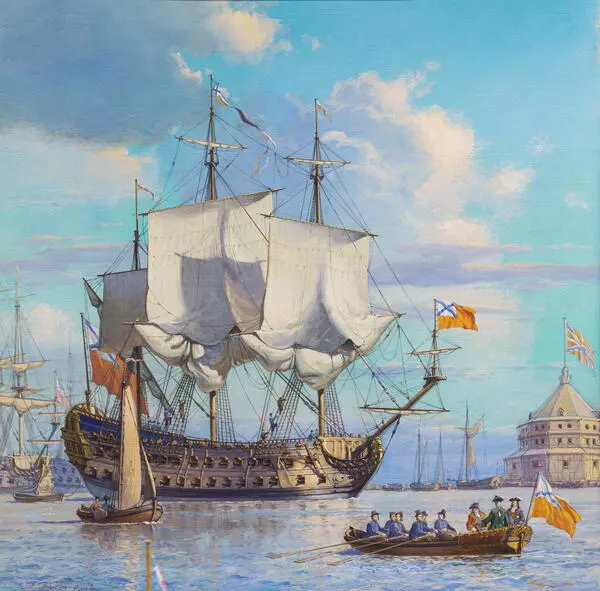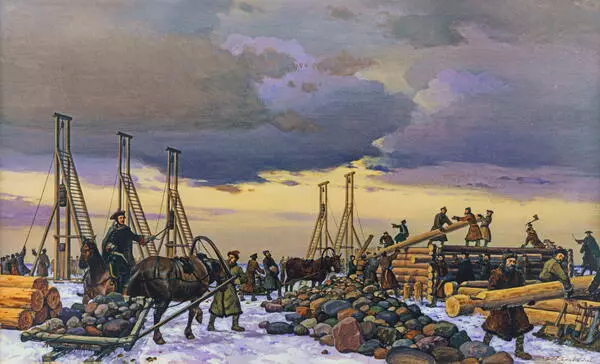In 1700, Tsar Peter the Great started a war for the Ingria region with Charles XII, King of Sweden. It lasted twenty-one years and went down in history as the Great Northern War. Having achieved victory in this war, Russia gained access to the Baltic Sea.
“To stand firm-footed by the sea”, it was necessary to construct a city fortress, a merchant harbor, and dockyards for building the fleet. The tsar himself examined the low and marshy banks of the Neva River and chose a small island called Zayachy as the spot for a fortress with powerful bastions. In its center, a wooden church named after the apostles Peter and Paul was founded, and the citadel itself was named the Peter and Paul Fortress. The city built around the fortress was named Saint Petersburg. In the fall of 1704, the construction of the new Admiralty fortress began according to the tsar’s drawings on the bank opposite to Vasilyevsky Island.
The tsar’s first residence in Saint Petersburg was a wooden cabin in what is now known as the Petrogradsky District. In 1704, the establishment of the Summer Garden began, and in 1710, the Summer Palace was built. In 1710, Peter the Great ordered to establish a monastery that was transformed into the Alexander Nevsky Lavra in 1797, and in 1711, the first Winter Palace was constructed. Peter the Great ordered noblemen, merchants, and representatives of other classes to move to Saint Petersburg.
In 1712, Saint Petersburg essentially became the capital of Russia, with the royal court, and later the Senate and other supreme authorities moved there. Thanks to the efforts of Peter the Great, Saint Petersburg became the country’s largest industrial center: ships of the Baltic Fleet were built at the Admiralty and Galley Dockyards, and the Mold Yard, Pitch Yard, Okhta powder mills, Armory, a series of government-owned manufactories, and other enterprises were established. The recognition of Saint Petersburg as Russia’s capital marked a new period in the history of its development. Having entered European politics after a series of military victories, Peter the Great who had defeated the brilliant army of Charles XII, intended to build relationships with European ruling houses on equal terms. In order to do that, he, as a monarch, needed to represent not the unique Muscovy, regarded by Europe as a Barbarian and uncivilized state, but a nation that had adopted European social conventions, court life, army, and governance traditions. The image of the new enlightened Russia was to be represented by the unique Europeanized city of Saint Petersburg that had risen “out of the darkness of woods and the marshes of wetlands.” This is the city that Peter the Great intended and managed to create on the banks of the Neva River.
“To stand firm-footed by the sea”, it was necessary to construct a city fortress, a merchant harbor, and dockyards for building the fleet. The tsar himself examined the low and marshy banks of the Neva River and chose a small island called Zayachy as the spot for a fortress with powerful bastions. In its center, a wooden church named after the apostles Peter and Paul was founded, and the citadel itself was named the Peter and Paul Fortress. The city built around the fortress was named Saint Petersburg. In the fall of 1704, the construction of the new Admiralty fortress began according to the tsar’s drawings on the bank opposite to Vasilyevsky Island.
The tsar’s first residence in Saint Petersburg was a wooden cabin in what is now known as the Petrogradsky District. In 1704, the establishment of the Summer Garden began, and in 1710, the Summer Palace was built. In 1710, Peter the Great ordered to establish a monastery that was transformed into the Alexander Nevsky Lavra in 1797, and in 1711, the first Winter Palace was constructed. Peter the Great ordered noblemen, merchants, and representatives of other classes to move to Saint Petersburg.
In 1712, Saint Petersburg essentially became the capital of Russia, with the royal court, and later the Senate and other supreme authorities moved there. Thanks to the efforts of Peter the Great, Saint Petersburg became the country’s largest industrial center: ships of the Baltic Fleet were built at the Admiralty and Galley Dockyards, and the Mold Yard, Pitch Yard, Okhta powder mills, Armory, a series of government-owned manufactories, and other enterprises were established. The recognition of Saint Petersburg as Russia’s capital marked a new period in the history of its development. Having entered European politics after a series of military victories, Peter the Great who had defeated the brilliant army of Charles XII, intended to build relationships with European ruling houses on equal terms. In order to do that, he, as a monarch, needed to represent not the unique Muscovy, regarded by Europe as a Barbarian and uncivilized state, but a nation that had adopted European social conventions, court life, army, and governance traditions. The image of the new enlightened Russia was to be represented by the unique Europeanized city of Saint Petersburg that had risen “out of the darkness of woods and the marshes of wetlands.” This is the city that Peter the Great intended and managed to create on the banks of the Neva River.
